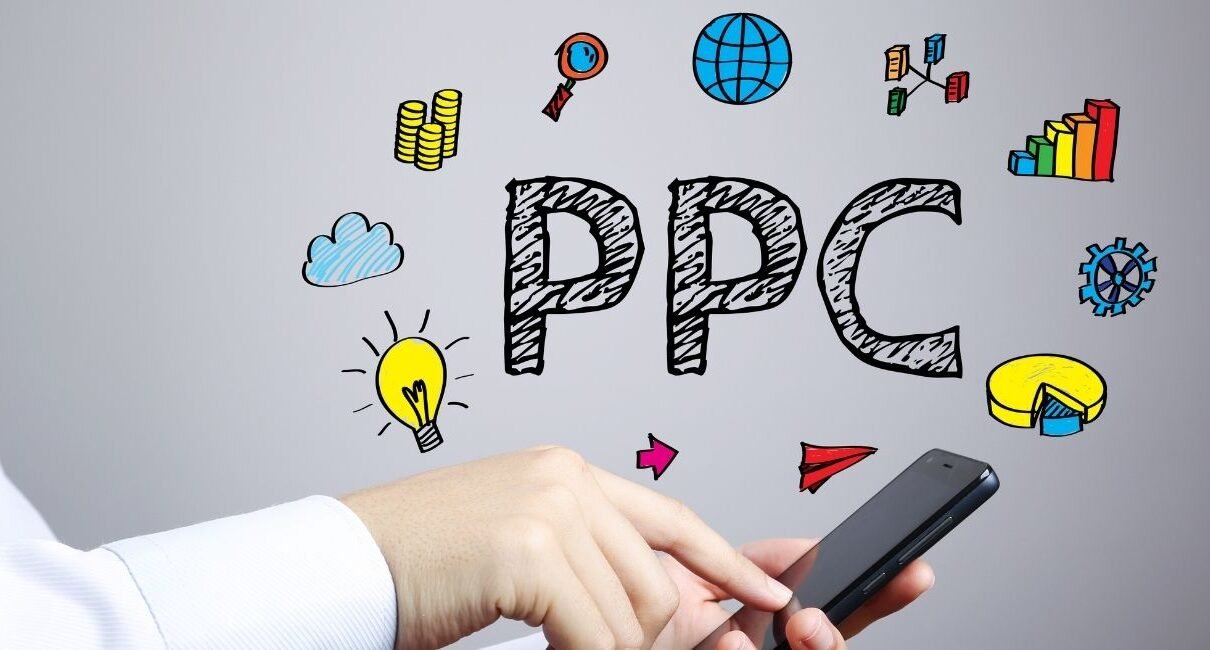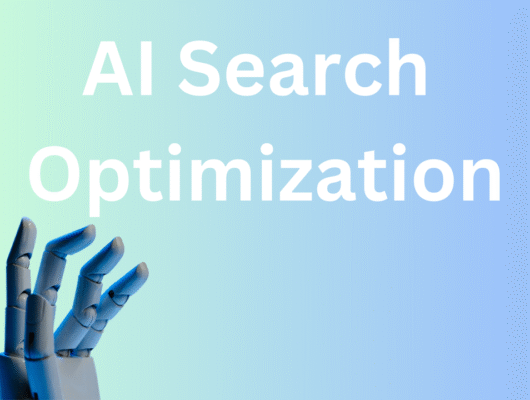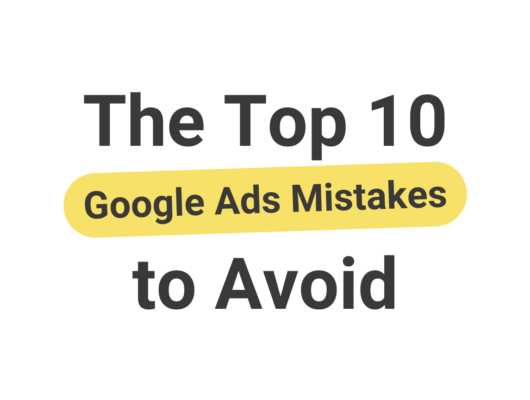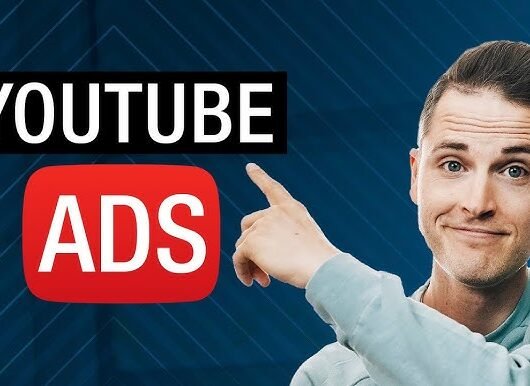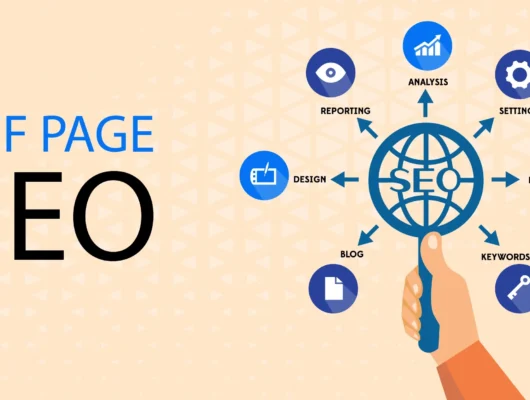Introduction:
In today’s rapidly evolving digital landscape, just creating a website isn’t enough to stand out. With millions of businesses competing for online attention, it’s crucial to find effective ways to stand out and reach your target audience quickly. That’s where Pay-Per-Click (PPC) advertising comes into play.
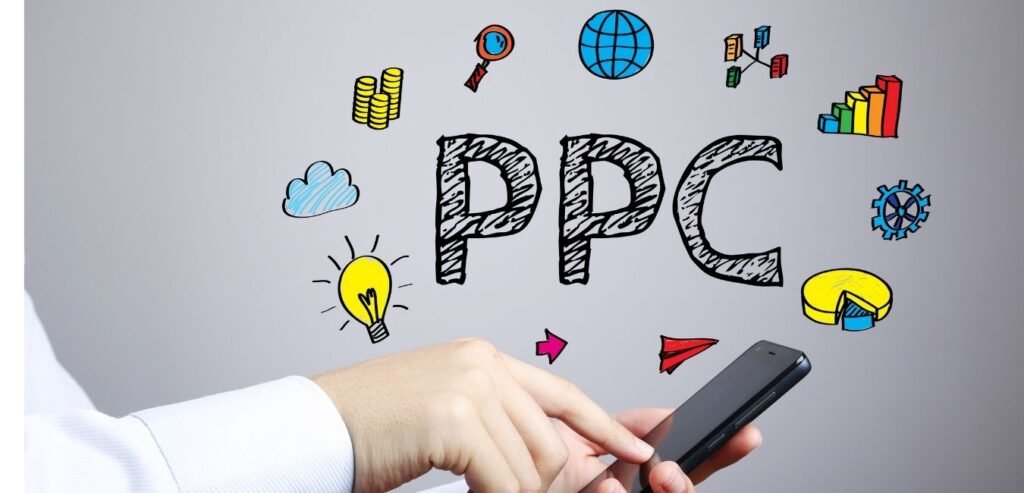
PPC is one of the most powerful tools in digital marketing, allowing businesses of all sizes to drive instant, targeted traffic to their websites. Whether you want to promote a product, generate leads, or increase brand awareness, PPC gives you the control, flexibility, and speed that traditional marketing often lacks.
In this article, we’ll break down everything you need to know about PPC — how it works, why it matters, and how it can help your business grow in today’s competitive online landscape.
What is Pay-Per-Click (PPC) Advertising?
Pay-Per-Click (PPC) advertising is an online marketing model where advertisers pay a fee each time someone clicks on their ad. Instead of earning visits to your website organically, you are essentially buying traffic through paid placements.
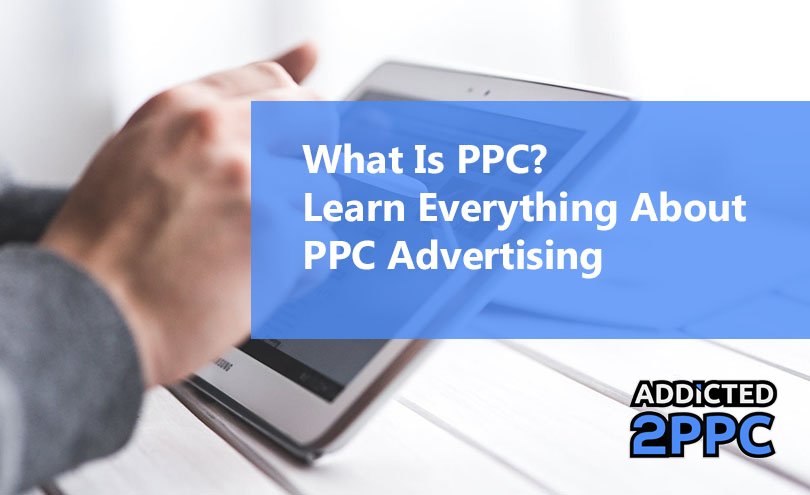
One of the most well-known platforms for PPC is Google Ads, where businesses bid on specific keywords to have their ads appear at the top of search results. Other platforms like Facebook, Instagram, LinkedIn, and YouTube also offer PPC ad options, allowing businesses to reach highly targeted audiences based on demographics, interests, and behavior.
The beauty of PPC lies in its precision — you can target exactly who you want, when you want, and only pay when someone shows genuine interest by clicking on your ad. This makes it a highly cost-effective and results-driven marketing strategy.
Whether you’re looking to increase website traffic, generate leads, or boost sales, PPC advertising offers a flexible and measurable way to reach your goals faster than most other digital marketing methods.
How Does PPC Work?
PPC advertising works on a bidding system where advertisers compete to show their ads to a specific audience. But unlike traditional advertising, you only pay when someone actually clicks on your ad, not just when it’s displayed.
Here’s a step-by-step breakdown of how PPC works:
1. Choose a Platform
First, you select a PPC platform like Google Ads, Bing Ads, or social media channels such as Facebook, Instagram, or LinkedIn, depending on where your target audience is most active.
2. Conduct Keyword Research
Start by identifying the search terms your target audience is likely to use. For instance, if you offer running shoes, you could focus on keywords such as ‘online running shoe store’ or ‘best running shoes to buy’.
3. Create Your Ads
Next, you write compelling ad copy, add relevant headlines, include links to your landing page, and add images or videos if needed. The objective is to capture interest and motivate users to click.
4. Set Your Budget and Bid Amount
You choose your daily or campaign budget and set a maximum bid—the highest amount you’re prepared to pay for each click. Thanks to automated bidding systems, you typically end up paying less than your maximum bid.
5. Ad Auction Begins
Each time a user searches or matches your targeting criteria, an automated auction decides which ads are shown. Platforms like Google consider factors such as:
Your bid amount
Your ad’s relevance
Your Quality Score (which includes ad relevance, click-through rate, and landing page experience)
Highly relevant, well-crafted ads can secure top positions, even if their bids are lower than those of competing advertisers.
6. Your Ad is Displayed
If your ad wins the auction, it’s shown to the user, whether in search results, on websites, within apps, or across social media platforms.
7. You Pay When Someone Clicks
As the name suggests, you’re charged only when a user clicks on your ad, not simply for showing it.
Example:
Let’s say you run a bakery in Mumbai. You launch a Google Ads campaign aimed at the keyword ‘best cakes in Mumbai’.
A user types that into Google.
Your advertisement is displayed prominently at the top of the search results page.
If the user clicks on your ad and visits your site, you pay for that click, say ₹10.
If they don’t click, you pay nothing.
PPC gives you control, flexibility, and immediate visibility, making it a powerful tool for driving results, especially when paired with the right strategy.
Types of PPC Ads
PPC advertising isn’t limited to just search engines. There are several different types of PPC ads, each designed to reach users at different stages of their buying journey and across different platforms. Here’s a breakdown of the most popular types:
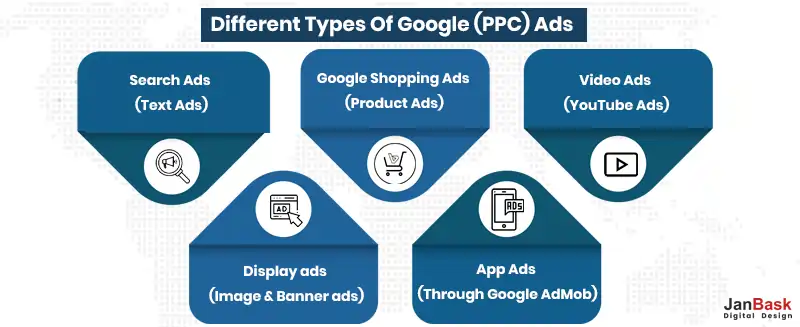
1. Search Ads
This is the most widely used type of PPC advertisement. They appear at the top or bottom of search engine results pages (like Google or Bing) when someone searches for a specific keyword.
Example: A Google ad for “best digital marketing agency in Delhi.”
2. Display Ads
Display ads are eye-catching visuals or banners that are shown on various websites within an ad network. These are part of the Google Display Network (GDN) or similar networks. They boost brand visibility by targeting users as they explore blogs, news portals, and other online platforms.
Example: A banner ad for a clothing brand on a fashion blog.
3. Shopping Ads
Shopping ads are product-based ads that appear on search results, especially for e-commerce businesses. They include a product image, title, price, and link to buy. These are managed through platforms like Google Shopping.
Example: An ad for a “wireless Bluetooth speaker” showing different products with prices on top of search results.
4. Video Ads
These are short video advertisements that run before, during, or after videos on platforms like YouTube. These ads are effective for increasing brand recognition or highlighting special deals.
Example: A 10-second commercial for a food delivery service shown before a cooking tutorial video.
5. Remarketing/Retargeting Ads
These ads target users who have previously visited your site or interacted with your brand. Remarketing allows you to reconnect with potential customers and encourage them to return and complete a desired action, such as making a purchase.
Example: Noticing an ad for a pair of shoes you recently viewed while browsing another website or using an app.
6. Social Media Ads
Social media PPC ads appear on platforms like Facebook, Instagram, LinkedIn, Twitter, and Pinterest, allowing businesses to reach highly targeted audiences. They can be text-based, image-based, carousel, or video ads. Social PPC is excellent for detailed audience targeting based on demographics, interests, and behaviors.
Example: A sponsored Instagram post promoting an upcoming webinar.
Benefits of PPC Advertising
Pay-Per-Click (PPC) advertising offers a range of powerful benefits that make it one of the most effective digital marketing strategies for businesses of all sizes. Whether you’re a startup, a local business, or an established brand, PPC can help you achieve your marketing goals quickly and efficiently.
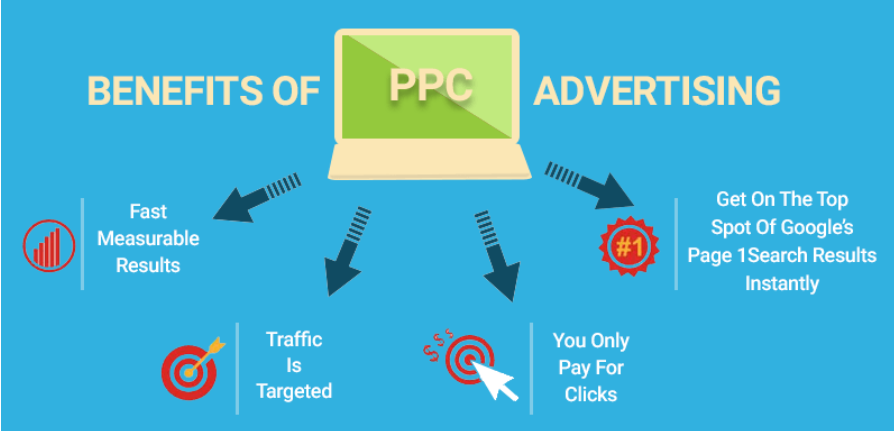
1. Instant and Targeted Traffic
Unlike SEO, which can take months to show results, PPC can drive traffic to your website almost instantly. You can start appearing on top of search engine results within hours of launching a campaign, giving you immediate visibility.
2. Highly Measurable and Trackable
PPC platforms like Google Ads and Facebook Ads Manager provide detailed performance data. You can track impressions, clicks, conversions, cost-per-click (CPC), and return on ad spend (ROAS) — helping you make informed decisions and measure exact ROI.
3. Full Control Over Budget and Spending
You set your daily or monthly ad spend. Whether you want to spend ₹500 or ₹50,000, PPC is flexible. Campaigns can be paused, adjusted, or stopped at any time, giving you full control without long-term obligations.
4. Precise Audience Targeting
PPC allows you to target users based on:
- The keywords they search
- Geographic location
- Device type (mobile/desktop)
- Time of day
- Demographics (age, gender)
- Interests and behaviors (especially on social media)
- It ensures your ads reach the right audience at the ideal moment for maximum engagement.
5. Boost Brand Visibility
Even if users don’t click your ads, just seeing your brand name consistently can improve recognition and trust. This is especially valuable for new businesses trying to enter competitive markets.
6. Supports Business Goals
Whether you want more website traffic, lead generation, app installs, sales, or brand awareness, PPC can be customized to align with any specific marketing objective.
7. Remarketing Opportunities
PPC allows you to re-target users who previously visited your site but didn’t convert. This is a great way to stay top-of-mind and bring potential customers back to complete the action.
8. Fast Testing and Optimization
You can run A/B tests on ad copy, headlines, images, keywords, and landing pages to see what performs best. This helps you optimize campaigns quickly for better results.
Key Metrics to Track in PPC
Tracking the right metrics in your Pay-Per-Click (PPC) campaigns is crucial to understanding performance, optimizing your strategy, and maximizing your return on investment (ROI). Below are the key PPC metrics that every business should regularly track to measure campaign performance:
1. Click-Through Rate (CTR)
CTR = (Clicks ÷ Impressions) × 100
Click-through rate (CTR) shows how frequently viewers click on your ad after seeing it. A strong click-through rate indicates that your ad copy and audience targeting are effectively capturing user interest. Low CTRs may signal that your ads are not relevant to your audience.
Why it matters: It directly affects your Quality Score and ad ranking on platforms like Google Ads.
2. Cost-Per-Click (CPC)
Cost-per-click (CPC) refers to the actual cost incurred each time a user clicks on your ad. This rate is influenced by your bidding strategy, the level of competition, and how relevant or high-quality your ad is.
Why it matters: Lower CPC means you get more clicks for your budget, increasing your campaign’s efficiency.
3. Conversion Rate
Conversion Rate = (Conversions ÷ Clicks) × 100
This metric shows the percentage of people who clicked your ad and then completed a desired action (e.g., purchase, sign-up, download). It tells you how well your landing page and overall offer are performing.
Why it matters: High traffic means nothing if it doesn’t lead to real results — this shows actual impact.
4. Quality Score
Quality Score is a rating between 1 and 10 that Google uses to evaluate your ad’s relevance, expected click-through rate (CTR), and the user experience on your landing page. A higher score can result in lower costs per click and better ad placements.
Why it matters: A good Quality Score can reduce your ad costs and improve visibility.
5. Impressions
Impressions represent how often your ad has been shown to users across the web or on search results. While you don’t pay for impressions in PPC (you only pay for clicks), this metric helps you understand your reach and brand visibility.
Why it matters: Useful for brand awareness campaigns and understanding audience exposure.
6. Return on Ad Spend (ROAS)
ROAS = Revenue from Ads ÷ Cost of Ads
This metric indicates the amount of revenue generated for each rupee or dollar you invest in advertising, helping you assess the overall efficiency of your ad spend. For instance, a ROAS of 4 means you earn ₹4 in revenue for every ₹1 invested.
Why it matters: ROAS is a crucial metric that helps gauge the profitability and overall effectiveness of your ad campaigns.
7. Bounce Rate
This metric represents the share of visitors who clicked on your ad but left the landing page without clicking, signing up, or engaging in any way.
Why it matters: Tells you whether your landing page delivers on what your ad promised.
Final Tip:
Monitor these metrics regularly using tools like Google Ads Dashboard, Google Analytics, and Facebook Ads Manager. Ongoing monitoring and fine-tuning are essential for achieving lasting success with PPC campaigns.
Common PPC Mistakes to Avoid
While Pay-Per-Click advertising can deliver amazing results, it’s also easy to waste your budget if campaigns are not set up or managed properly. Here are some of the most common PPC mistakes businesses make — and how you can avoid them:
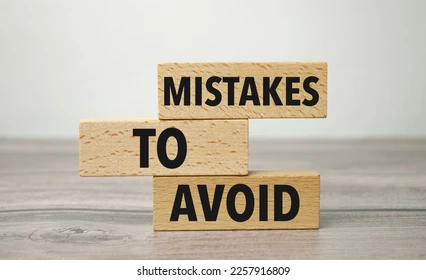
1. Not Using Negative Keywords
Many advertisers forget to add negative keywords — words or phrases for which you don’t want your ads to appear. Without them, your ads may show up for irrelevant searches, leading to low-quality clicks and wasted spend.
Keep your negative keyword list up to date to prevent your ads from showing for irrelevant searches.
2. Ignoring the Landing Page Experience
Directing users to a generic or poorly optimized landing page often results in high bounce rates and fewer conversions. If your landing page doesn’t match the promise of your ad, users won’t take action.
Fix it: Make sure your landing page is relevant, mobile-friendly, fast, and has a clear call-to-action (CTA).
3. Setting and Forgetting Campaigns
Many businesses launch a campaign and then forget to monitor or optimize it. This can lead to overspending, missed opportunities, or underperforming ads.
Fix it: Review and optimize your campaigns regularly. Analyze what’s working and pause what isn’t.
4. Bidding on Broad Match Keywords Only
Broad match keywords can cause your ad to appear for unrelated or loosely related searches, draining your budget fast.
Fix it: Use a mix of match types — exact match, phrase match, and broad match modifier — to control when and where your ads appear.
5. Not Tracking Conversions
Without setting up conversion tracking, it’s impossible to identify which ads, keywords, or devices are truly driving valuable outcomes.
Fix it: Set up conversion tracking using Google Ads, Google Analytics, or Facebook Pixel to measure true ROI.
6. Focusing Only on Clicks, Not Conversions
A high number of clicks doesn’t always mean success. If clicks aren’t converting into leads or sales, your ad spend is going to waste.
Fix it: Focus on conversion metrics — not just traffic — to determine campaign success.
7. Weak or Generic Ad Copy
Ads that are boring, unclear, or irrelevant will result in poor click-through rates. If your ad doesn’t speak to the user’s intent, they’ll scroll past it.
Fix it: Write compelling ad copy with clear benefits, urgency, and a strong call-to-action.
Is PPC Right for Your Business?
Pay-Per-Click (PPC) advertising is a highly effective strategy, but it doesn’t suit every business in the same way. Whether PPC is the right choice for you depends on several factors, such as your business goals, available budget, industry type, and current stage of growth. Here’s how to evaluate if PPC aligns with your needs:
PPC Is Right for You If:
You Need Fast Results
Unlike SEO, which builds results gradually, PPC can generate traffic and leads almost immediately after launch, making it ideal for promotions, new product releases, or time-sensitive campaigns.
You Want Highly Targeted Marketing
PPC enables precise audience targeting by allowing you to tailor ads based on location, interests, demographics, search behavior, and device type. If precision matters, PPC delivers.
You Have a Defined Marketing Budget
PPC is a great fit for businesses that have a defined advertising budget and want full control over their spending. You control how much you spend daily, monthly, or per campaign, and you only pay when someone clicks.
You Want Measurable ROI
Every click, impression, and conversion can be tracked. If your focus is on tracking performance and boosting returns, PPC delivers in-depth data and insights to inform and refine your marketing strategy.
You Sell Products or Services Online
PPC is ideal for e-commerce stores, local service providers, SaaS companies, and more. It drives potential buyers directly to your site when they’re ready to take action.
When PPC Might Not Be the Best Fit:
- If you have a very limited budget with no room for testing or optimization
- If your website or landing pages are not optimized, you may waste money.
- If you’re looking for a 100% free, long-term traffic solution, then SEO is better.
The Bottom Line:
PPC can benefit almost any business — from startups and local shops to large enterprises — if done strategically. The key is to set clear goals, target the right audience, and continually optimize your campaigns.
If you’re unsure how to start or worried about wasting money, consider working with a PPC expert or digital marketing agency to guide you.
Getting Started with PPC
Starting with Pay-Per-Click (PPC) advertising may seem overwhelming at first, but with the right approach, it’s easier than you think. Whether you’re a small business owner or a marketer stepping into paid ads for the first time, here’s a simple roadmap to help you launch your first PPC campaign with confidence:
1. Set Clear Goals
Before you launch anything, define what you want to achieve.
Are you looking for:
- Website traffic?
- Leads or sign-ups?
- Online sales?
- Brand awareness?
- Your goals will shape your campaign strategy, platform, and ad format.
2. Choose the Right PPC Platform
Pick a platform based on where your audience is most active:
- Google Ads – Best for search-based intent and wide reach
- Facebook & Instagram Ads – Great for visual content and audience targeting
- LinkedIn Ads – Ideal for B2B marketing
- YouTube Ads – Ideal for sharing compelling stories and capturing audience attention through video content.
3. Research Your Audience and Keywords
Use tools like Google Keyword Planner, Ubersuggest, or SEMrush to discover keywords your audience is searching for.
Also, define your audience demographics, interests, and behaviors if you’re running social media ads.
4. Create Compelling Ad Copy
Your ad should capture attention quickly and motivate viewers to take the next step.
Include:
- A strong headline
- Relevant keywords
- A clear value proposition
- A call-to-action (CTA) such as “Shop Now,” “Request a Free Quote,” or “Join Today” encourages users to take immediate action.
5. Design a High-Converting Landing Page
Your landing page should match the ad’s promise and make it easy for visitors to convert.
Make sure it’s:
- Fast-loading and mobile-friendly
- Visually clean and focused
- Equipped with a clear CTA button (e.g., “Book Now”, “Download”, or “Contact Us”)
6. Set Your Budget and Bids
Decide how much you’re willing to spend daily or monthly.
Start small, monitor results, and scale up based on performance. Most platforms allow you to control:
- Daily budget
- Maximum cost-per-click (CPC)
- Total campaign spend
7. Launch and Monitor Performance
Once your campaign goes live, track key metrics like:
- Click-through rate (CTR)
- Cost-per-click (CPC)
- Conversion rate
- Return on ad spend (ROAS)
- Use this data to make adjustments — pause underperforming ads, test new creatives, and refine targeting.
8. Optimize and Scale
PPC success comes from continuous testing and optimization.
Test different:
- Headlines and descriptions
- Images or videos
- Keywords
- Audiences
- Landing pages
- Once you find what works, increase your budget to maximize results.
Final Thoughts
Pay-per-click (PPC) advertising is a highly effective digital marketing strategy that delivers fast, targeted, and trackable outcomes. Whether your goal is to attract more website visitors, capture qualified leads, drive sales, or build brand visibility, PPC provides the flexibility and control needed to achieve results quickly and efficiently.
While getting started might feel complex at first, PPC becomes highly rewarding when you understand its core elements: smart targeting, compelling ad copy, proper budgeting, and ongoing optimization.
The key to success lies in testing, learning, and refining your campaigns continuously. Even a small campaign, when managed strategically, can outperform expensive efforts with no direction.
So, whether you’re a startup trying to get noticed or an established business looking to scale, PPC can deliver real, trackable results — often faster than any other digital channel.
Ready to Launch Your First PPC Campaign?
If you’re ready to grow your business but need expert guidance, our team is here to help. From strategy and setup to optimization and scaling, we handle it all — so you can focus on running your business while we drive the traffic.


